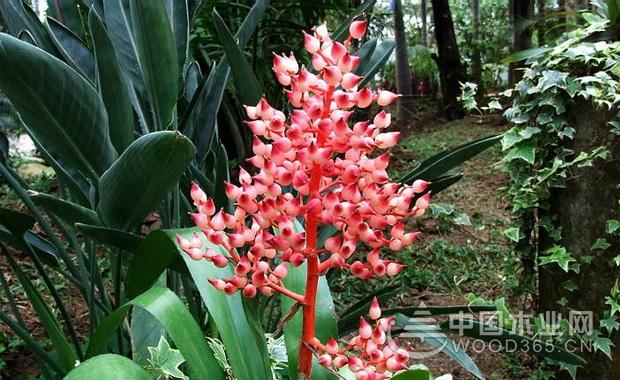Water tower flower plant introduction and water tower flower culture method
Water tower flower is one of the home green plant species introduced in recent years. It is an indoor ornamental plant with beautiful flowers and leaves. Is it difficult to feed the water tower flower? Let's take a look at the main points of the culture method of the water tower flower.
Water tower flowers are perennial grasses and succulents, prefer warm, moist, and semi-yin environments. Not cold resistant. Slightly drought tolerant, native to Brazil. In recent years, China has introduced and cultivated plants, which are good indoor plants for planting foliage plants.

The water tower flower is generally cultivated by ramets, that is, the mother plant is taken out from the flower pot, the excess potting soil is shaken off, the roots of the discs are separated as much as possible, and it is cut into two or two strains with a sharp knife. Above, each of the divided plants must have a considerable root system, and the leaves should be properly trimmed to facilitate survival.
Water tower flowers require a relatively high temperature of more than 65% of the air in the growing environment. When its relative humidity is too low, its branches will sag downwards and the leaves will sag downwards. Over time, its entire plant type will be destroyed and its ornamental value will be lost.
At the same time, its growth will be weak. When the relative humidity of the air in its growing environment is too high, its leaves will temporarily stop transpiration, and the growth will weaken. Over time, it will lead to various diseases. Its favorite air relative humidity is 65%-75%.
The water tower flower originally lived in the shade of the temperate to warm temperate bushes or the northwest of the hillside, and can receive some intermittent direct sunlight every day. In the summer high temperature season, if it is kept under direct sunlight, it will grow very slowly or enter a semi-dormant state, and the leaves will also be burned and slowly turn yellow and fall off.
Therefore, it should cover about 50% of the sunlight in the hot summer. In the spring, autumn and winter seasons, because the temperature is not very high, it can be given appropriate direct sunlight to facilitate its photosynthesis and flower buds and flowering.
Water tower flower culture method:
1. Soil: The growth of water tower flowers is not high on soil quality. It is better to use slightly acidic sandy loam with rich humus and good drainage and permeability, but avoid calcium soil.
2. Sunshine: The water tower flower mainly lives in the shade of the bushes or the northwest side of the hillside, and can receive some intermittent direct sunlight every day. So if it is kept in direct sunlight in the summer, it will grow very slowly or enter a semi-dormant state, and the leaves will be burned and slowly turn yellow and fall off, so be careful to cover 50% of the sun. In other seasons, because the temperature is not very high, the water tower can be appropriately irradiated with sunlight to facilitate photosynthesis and flower bud formation and flowering.
3. Temperature: Water tower flower is native to tropical or subtropical zone. It prefers high temperature and high humidity environment. Therefore, the optimum growth temperature of water tower flower is 18-30 °C. It can be tolerated when the summer temperature is above 35 °C, but the growth will be temporary. Obstructed, it is not safe to winter when the temperature is below 3-6 °C in winter.
4. Moisture: The growth of the water tower flower environment requires more water, but the potting soil must not be too wet. In addition to watering to keep the soil moist, water can also be filled with water in the central tube of the plant. Watering should be less in winter, do not add a lot of water in the center tube, keep it moist; usually spray water around the plants to maintain high ambient humidity, and often scrub the leaves with a soft cloth to keep the leaves bright. clean.
5. Fertilization: There are many requirements for fertilizer and water, but most of them are afraid of fertilization, heavy fertilizer and partial application of nitrogen, phosphorus and potassium fertilizers. It is required to follow the principle of fertilization (water) with “light fertilizer application, less quantity and more nutritionâ€.
6, pests: mainly leaf spot and virus disease hazards. Leaf spot disease is sprayed with 50% thiophanate WP 1000 times solution; virus disease is sprayed with 20% chlorinated copper WP wettable powder, once a week, even spray 2-3 times.
Sprayer For Garden Tractor,High Pressure Tree Sprayer,High Volume Sprayer,Pull Behind Sprayer For Tractor
YUYAO ZHENGYU SPRAYER FACTORY , https://www.zysprayer.com